A South African safari that doesn’t break the bank? Katie McGonagle finds wildlife without the wild prices in KwaZulu-Natal.
Click here to download and save as a PDF.
It’s been nearly an hour and so far our walking safari has been more walk and less safari. Not that a pleasant stroll through the acacia-studded hills and brilliant green plains of a South African game reserve isn’t welcome, but there hasn’t been a single animal in sight – until now.
We pause for a moment under the shade of a marula tree. A pair of horns bobs up in the distance. Then a head. Then a long, spindly neck, and suddenly the awkward, elegant figure of a full-grown female giraffe comes into view.
She’s keeping a watchful eye on us, which makes sense as soon as a baby giraffe bounds out behind her. Nothing’s coming between this mother and her calf.
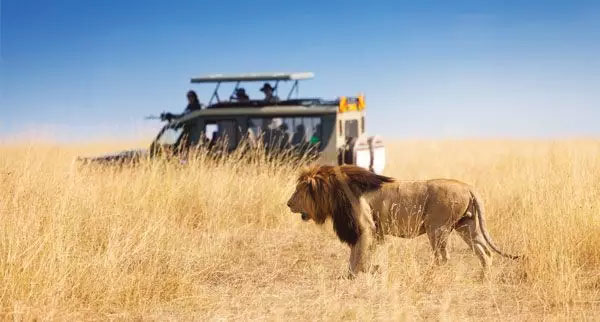
We remain resolutely still, content to watch mother and baby at play, when a crowd of zebras plods over the ridge, a handful of waterbuck follow suit, and the gnu that has so far been hiding behind the trees comes out to play alongside a trio of rotund warthogs.
This is just an average afternoon under the African sun for them, but for us it’s something rather more special. To share the same ground, traipse across the same rocky terrain and stand amid the same waist-high grasses as these wild creatures is a totally different experience from a standard game drive.
“A crowd of zebras plods over the ridge, a handful of waterbuck follow suit, and the gnu that has so far been hiding behind the trees comes out to play.”
Then again, that’s KwaZulu-Natal for you. Even one of the country’s youngest parks – Ithala Game Reserve, 250 miles north of Durban, was established only in 1973 – has surprises in store for those who think they’ve seen all South Africa has to offer.
And for those who assume a safari can only ever be a high‑end holiday, the eco-lodges of government organisation Ezemvelo KZN Wildlife – which manages 110 bush lodges, campsites and a few full-service resorts, which are starting to be sold to the UK trade – tell a different story.
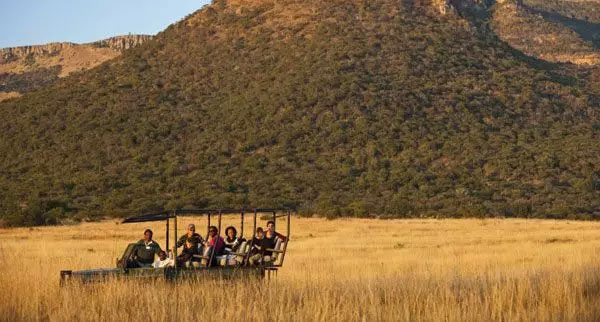
Hluhluwe-Imfolozi Park
While KwaZulu-Natal is home to one of South Africa’s most recently established reserves, it also boasts the oldest, in Hluhluwe-iMfolozi Park, founded in 1895. This enormous park has the biggest population of white rhino in the country, as well as the rest of the ‘big five’.
These mighty creatures never fail to amaze. We stopped on an evening game drive to watch a female rhino chasing several rather amorous males away as she stopped to get a drink at a watering hole. And we stood in awe as we came across another white rhino on a morning walking safari, grazing quietly just a few feet away in a clearing.
“We stopped on an evening game drive to watch a female rhino chasing several rather amorous males away as she stopped to get a drink at a watering hole.”
Yet the smaller species can be just as enchanting if you stop to watch them at work, and have a good guide to explain their behaviour. Take the spider that our guide, Samora, identified from just a strand of its web; the genet he spotted disappearing into the bushes while we were looking for bigger game; and the nightjar hiding up in the trees. Even the lowly dung beetle proved weirdly fascinating as we stopped to see it labouring away.
Look out too for the park’s exhibition about Operation Rhino, the 1950s effort to bring the white rhino back from the brink of extinction, led by park warden Ian Player, and the current efforts to stamp out modern-day poaching in the park grounds.
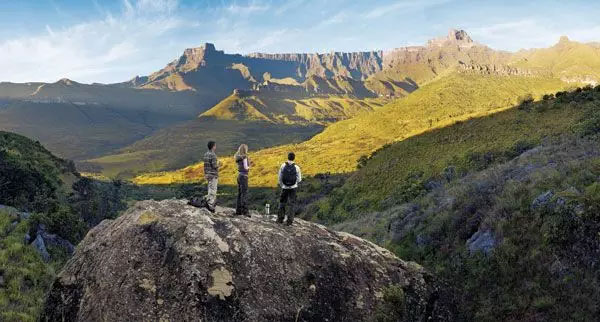
Drakensberg
If South Africa’s big game is its big star, its epic landscapes come a close second. The wide, sweeping scenery of the Drakensberg mountains – all velvety grass-covered hills interspersed with jagged, rocky crags – is truly something to behold.
Even the sky seems to be bigger than usual here. On our first evening at Giant’s Castle Resort, set in the game reserve of the same name, a storm rolled in, sending streaks of lightning across slate-grey clouds on to the hulking blue-grey shadows of the mountains below.
“The wide, sweeping scenery of the Drakensberg mountains – all velvety grass-covered hills interspersed with jagged, rocky crags – is truly something to behold.”
Geographical features aside, this area is also home to a fascinating chapter of human history. Its caves house prehistoric rock art by the indigenous hunter-gatherer San people found across southern Africa.
A half-hour hike up to the Main Caves – though the altitude here might make that feel more strenuous than it sounds – reveals images sketched on sandstone of a medicine man, women with children, and even warriors and white soldiers from the Anglo-Boer War at the turn of the 20th century. Created using nothing but ochre, charcoal or white clay, and painted with porcupine quills, feathers or sticks, these simple images are one of the few links to the history of a people with no written records of their way of life.
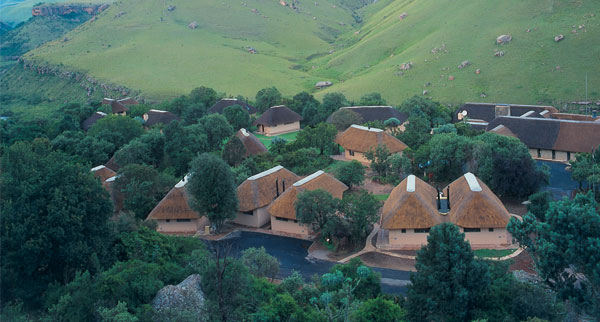
Battlefields
In more recent history, the battlefields of the 19th-century Anglo-Zulu war also lie in this region. Whether clients are interested in military history or not, they can’t help but feel a chill standing on the grassy battlefields of Isandlwana – the site of the conflict’s first major battle, in 1879 – surrounded by the white stone cairns that mark the burial spots of British soldiers.
Forget the Michael Caine version in the film Zulu: seeing the open plains and the high ridges where rifle-bearing redcoats clashed with spear and shield-wielding Zulu warriors is more tragedy than drama. It feels strangely peaceful now, with nothing but black and white Nguni cows roaming these beautiful landscapes.
“Whether clients are interested in military history or not, they can’t help but feel a chill standing on the grassy battlefields of Isandlwana.”
Later on the same day in 1879 came the Battle of Rorke’s Drift, another battlefield site now accessible to the public. A guide is essential to make sense of how the raging battle unfolded, as the British soldiers tried to defend their position.
There are tales of heroism – 11 soldiers were awarded the Victoria Cross, the most ever given to one regiment for a single battle – but here too the most striking thing is the strange sense of calm that now pervades the site.
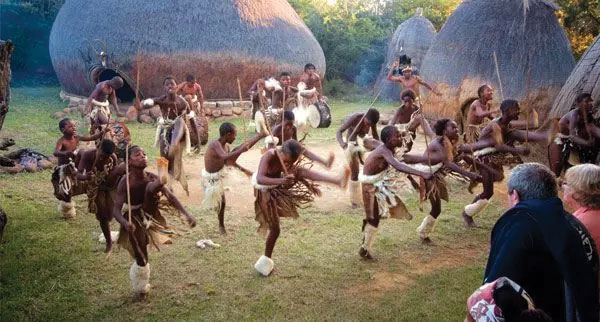
Where next?
These are just a handful of the highlights of KwaZulu-Natal. Flagship city Durban boasts golden beaches and Indian-inspired cuisine, while provincial capital Pietermaritzburg was host to a pivotal moment in world history when a young Gandhi was forced off a train on a cold night in 1893 for travelling in the first-class carriage alongside other white passengers, an incident which helped shape his philosophy of nonviolent resistance.
“Pietermaritzburg was host to a pivotal moment in world history when a young Gandhi was forced off a train on a cold night in 1893 for travelling in first-class.”
Then there’s Lake St Lucia and the staggeringly beautiful iSimangaliso Wetland Park. If you’ve ever wondered what sort of environment could offer a home to everything from elephants, leopards and rhinos, to crocodiles, hippos, whales and turtles, not to mention coral reefs, mangroves and hundreds of bird species, it’s iSimangaliso, where several ecosystems meet in one place.
The name comes from the Zulu word for ‘miracle’. It’s an apt description for this whole region, where history, wildlife and wild scenery come together in one utterly captivating mix.
A miracle indeed.
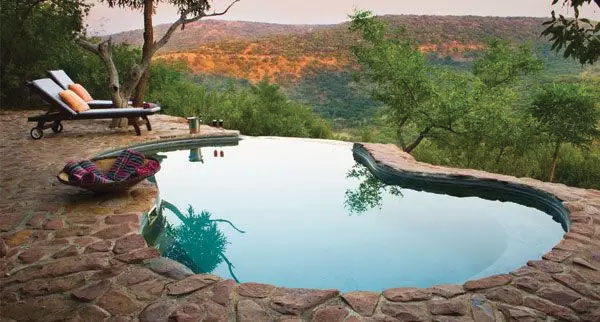
Sample products
Visions of Africa offers a 13-day self-drive safari through KwaZulu-Natal from £2,175, including flights, meet-and-greet, transfers, car hire with insurance and tourism levy, departing in August. Accommodation includes Giant’s Castle Resort, Isibindi Zulu Lodge, Ntshondwe Camp at Ithala Game Reserve and Hilltop Camp, on a mixed-board basis.
visionsofafrica.co.uk
A double suite at Isibindi Zulu Lodge starts at £127 per person full-board, including meals, daily game drive or walk and, for two-nights stays, a Zulu boma dinner.
isibindizulu lodge.co.za
A one-bedroom chalet at Hilltop Camp in Hluhluwe-iMfolozi Park starts at around £105 for two people including breakfast. A stay adding dinner and a game drive is from £173 a night.
ekznw.co.za
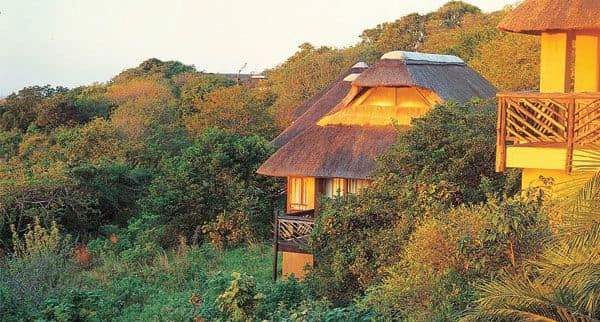
Where to stay
Hluhluwe-iMfolozi Park: Hilltop Camp is the only resort inside the park, although several luxury lodges dot the edges. It’s a mix of one or two-bedroom chalets and rondavels (round huts), though the latter lack en suite bathrooms so may not be suitable for all guests. Chalets are spacious, with a living room and terrace, and while the decor could do with an update, it’s a comfortable stay. There’s a busy buffet restaurant and outdoor pool on site.
Drakensberg: Giant’s Castle Resort is full of low-rise, single-storey chalets with kitchenettes, and each has its own veranda. Thatched roofs make them rather dark, but its prime location and friendly staff make up for it. The restaurant serves good portions of unpretentious food, and a glass of wine or a beer will set you back less than £2.
Battlefields: Isibindi Zulu Lodge is an intimate, six-room boutique where each room is named after the mountain it overlooks, with a private veranda to admire the view – vistas only just beaten by the sweeping panorama from the infinity pool (pictured). It has a homely feel with African decor (with a refurb due in June). Staff are attentive, while strong links with the Zulu community lend an authentic feel. A real gem.
Read more
Exploring South Africa’s Limpopo and Mpumalanga provinces
Exploring Cape Town’s neighbourhoods
The best national parks in western Uganda




